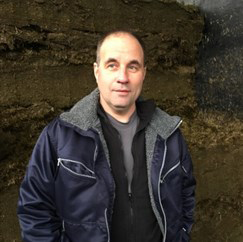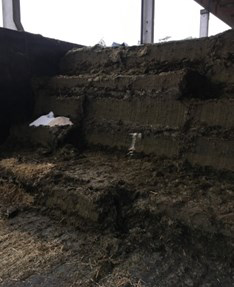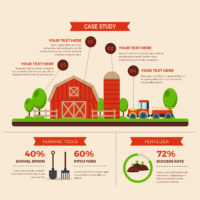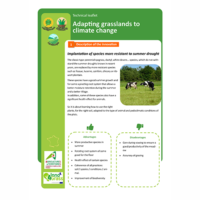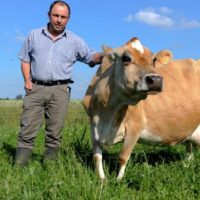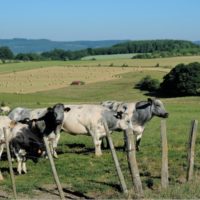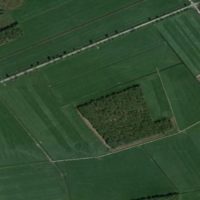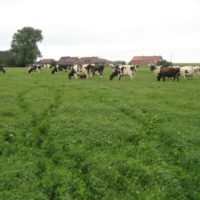Description
Precision gives minimal silage losses
Örjan Bergman wants to maximise use of the farm’s own forage. In particular, he wants to minimise losses of the forage stored as silage. This is important from an economic and a practical perspective – clearing out spoiled silage takes time.
Through taking part in a research project at SLU, Örjan found that silage losses are not only those that have to be cleared out with great effort, since invisible losses are just as important.
Packing is crucial. Two bunker silos are filled at the same time, with two front loaders, so that there is enough time to pack them carefully. During the night the forage is allowed to settle and then packed again in the morning. ”The silage should be as hard as the floor.” The silage is then covered very carefully with plastic, pressed down particularly carefully along the edges. On top of the plastic is laid a 10-15 cm thick layer of sand. It is very important to seal along the silo walls.
The silage is fed out using a ‘stepladder’ method to minimise losses. Any losses from the upper layer fall onto the lower ‘step’, instead of ending up on the floor and spoiling.
Reason for the innovation
Good conservation and minimal losses save forage and improve animal health, which is evident as e.g. low cell count in the milk
When the new cattle house was built five years ago, the logistics and machinery chain for silage were planned. “It is more profitable and more satisfying when the cows produce milk from grass grown on the farm – it’s important not to destroy existing resources!”
Farm description
Environment
- Soil types: Clay loam
- Climate: Temperate continental climate
- Altitude: 30 m a.s.l
- Slope: 2 %
- The farm is located in Södermanland, south-east Sweden.
Grassland management
- Grazing: Yes, production grazing.
- Temporary grassland with two varieties of red clover, timothy, meadow fescue and perennial ryegrass. White clover is always available in the soil.
Structure
- Annual Work Unit: 6, working with animals and crop production.
- KRAV-certified organic production.
- 398 ha arable land area, of which
- 178 ha
- 42 ha temporary grassland area for cutting and grazing, respectively.
- 80 ha semi-natural grassland area.
Animal performance
- 200 dairy cows (Holstein and Swedish Red), producing 9,000 kg KRAV-certified milk per year.
- Total mixed ration and parlour milking.
Why it is working
When making silage, ‘hack, pack, cover’ is a well-known motto. At Ekenäs farm, there is proof that silage losses are much lower than on other farms. The logistics are well-planned. The machinery chain has been adjusted and two bunker silos are filled at the same time. The drivers doing the packing have time to do a thorough job. Planning, adjustment of machinery and taking good care at every stage are the reasons for the low levels of silage losses.
